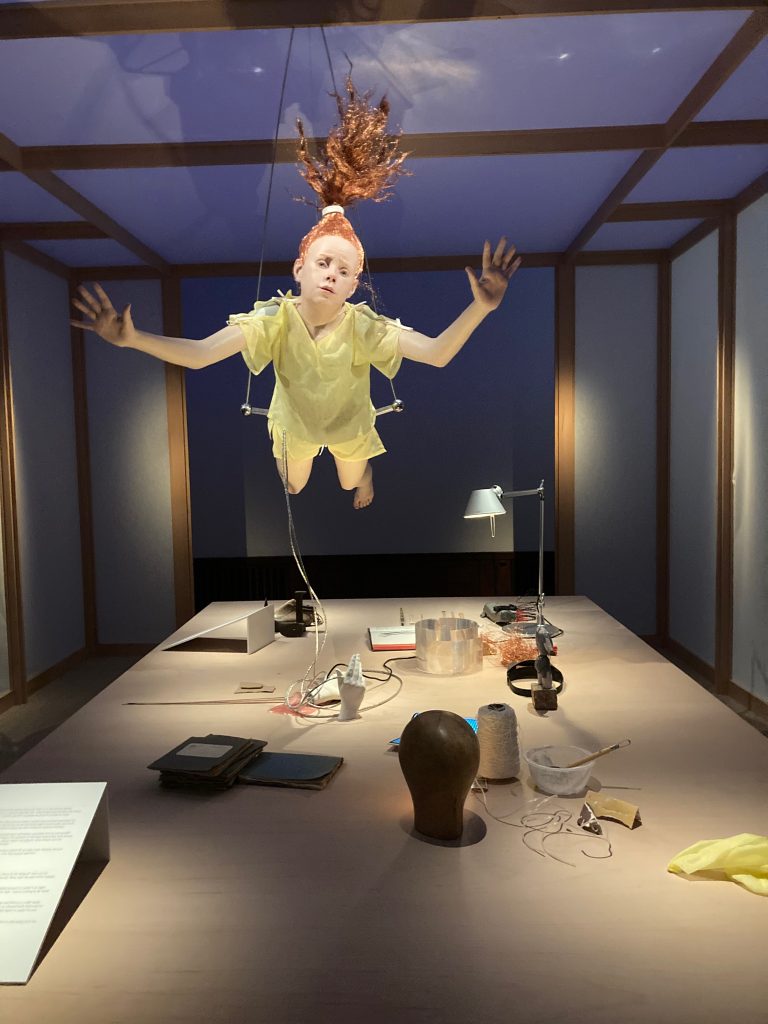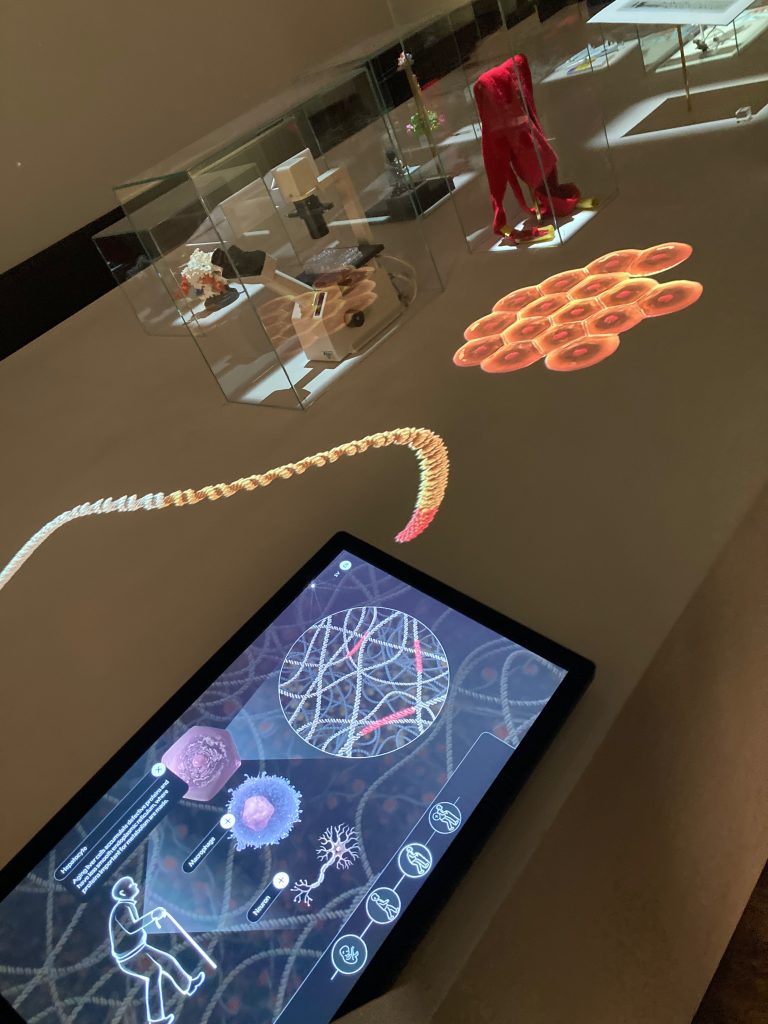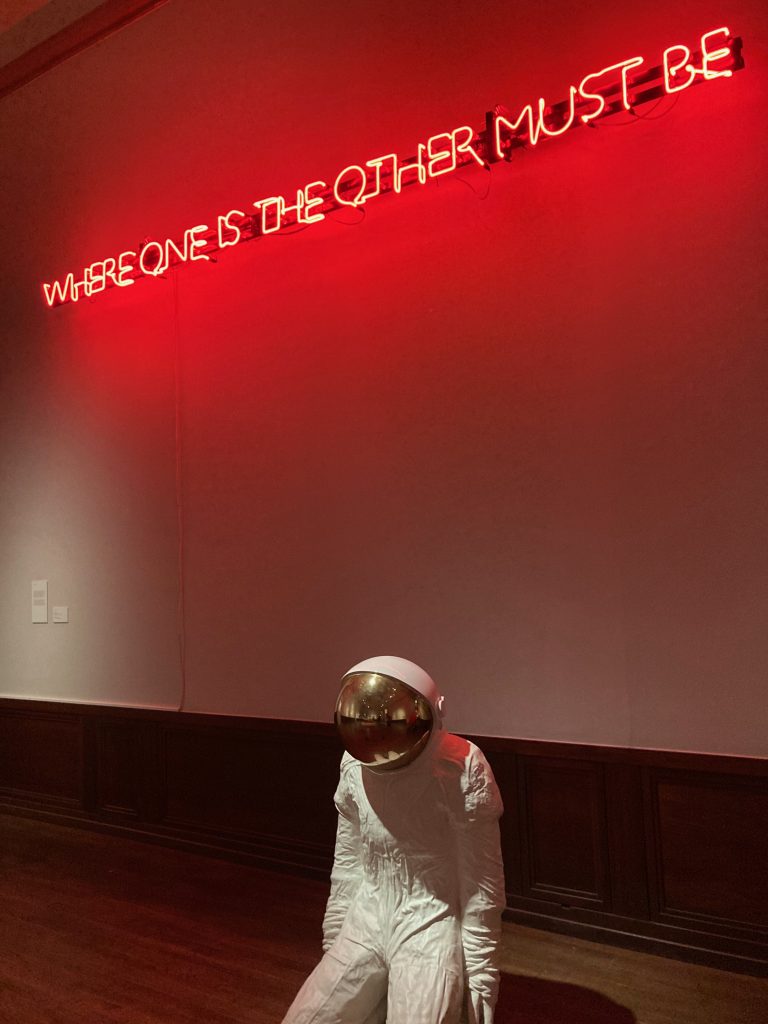
Showcasing our eternal quest for immortality
Nothing in life is to be feared, it is only to be understood.
Now is the time to understand more so we may fear less.
Marie Sklodowska Curie
The latest exposition from the Nobel Prize Museum in liljevachs “Life Eternal” (Evigt Liv) takes us on a journey of what it means to be human and how we are pushing the boundaries of our existence in our quest for immortality.
This illuminating exposition explores the concept of acquiring eternal life from a scientific, artistic and humanitarian perspective. The expo also highlights several Nobel Prize Laureates whose work was in one way or another aimed at prolonging human life.
Beside a shiny old wooden desk featuring a replica of Marie Curie’s notebook (the real one is radioactive!) is a large desk showcasing the work of Esther Duflo and her husband Anhijit Banerjee. They received the Nobel Prize in Economics in 2019 for their work on microeconomics in developing countries. They have contributed to prolonging the life of many people based on their innovative experiments aiming at alleviating global poverty. Their methods relies on dividing complex economic issues into small feasible tasks.
Another impactful part of the expo are short videos of people who have received organs. Their powerful testimonies are about how someone can overcome death by allowing a part of themselves to stay alive in another person. The stories shared by the organ receivers are very moving especially when they share their thoughts and feelings about the survivor’s guilt which all of them felt.
One part of the expo which impressed me a lot is inspired by the Nobel Prize Winner Kazuo Ishiguro’s dystopian science fiction novel Klara and the Sun. In a small dim lit room, we see a girl flying in space. When looking closer, we see that her chest illuminates in blue with a certain rhythm, and she is also attached by cables. We then realise that this is not a human girl but a robot. Kazuo Ishiguro’s book contemplates the idea of transferring someone ‘soul’ and immortalising it in an AI. His book also tackles the idea of enhancing human capabilities by genetic modification which combines both concepts of immortality and eugenics.

Being a researcher in biomedical sciences, the part of the expo which caught my attention the most was dedicated to CRISPR-Cas9. Emmanuelle Charpentier and Jennifer Doudna won the Nobel Prize in Chemistry in 2020 for inventing this technology which allows genome editing with incredible precision. An interactive tool allows the visitors to understand the fascinating mechanisms behind CRIPS-Cas9. In summary, when viruses infect bacteria, they insert a part of their DNA into sites called CRISPR within the bacterial genome which are then passed on to the cell progeny forming a ‘genetic vaccination card’ as Jennifer Doudna describes it in her TED talk. To fight a new infection from the same virus, the bacteria form an RNA copy of the integrated DNA (called guide-RNA) which associates with the protein Cas9 and searches for the newly infectious DNA virus to break it and prevent a new infection.

The applications of the CRISPR-Cas9 technology are limitless, but certainly raise many ethical concerns. This technology has revolutionised basic research as it allows gene editing efficiently and easily to understand the effects of any genetic mutation. From a clinical perspective, the majority of the genomic editing using CRISPR-Cas9 or other technologies are currently done in somatic cells and are limited to single-gene disorders such as beta-thalassemia, sickle cell anaemia and cystic fibrosis. On the other hand, germline genomic editing is a controversially debated topic and requires inter-disciplinary discussions among communities, scientists, policy makers and healthcare professionals in order to come up with a consensus. Where do we draw the line in our definition of ‘disease’? What are we allowed to genetically alter in human and other species genomes and what are we not? Most importantly, who gets to make these decisions?
Indeed, CRISPR-Cas9 has the potential to cure several human diseases but it also might tempt some, possibly the most fortunate in this world, to venture in the area of human enhancement and human engineering. This might increase the gaps and differences between people and nations based on where the ‘line’ in gene editing is drawn.

We now have the capacity like never before to understand what we once feared. Research and technology is reducing our fear of death by making it possible to extend our lives one step at a time and immortalise ourselves in one way or another.
melodychemaly
Crafty researcher curious about everything!

0 comments